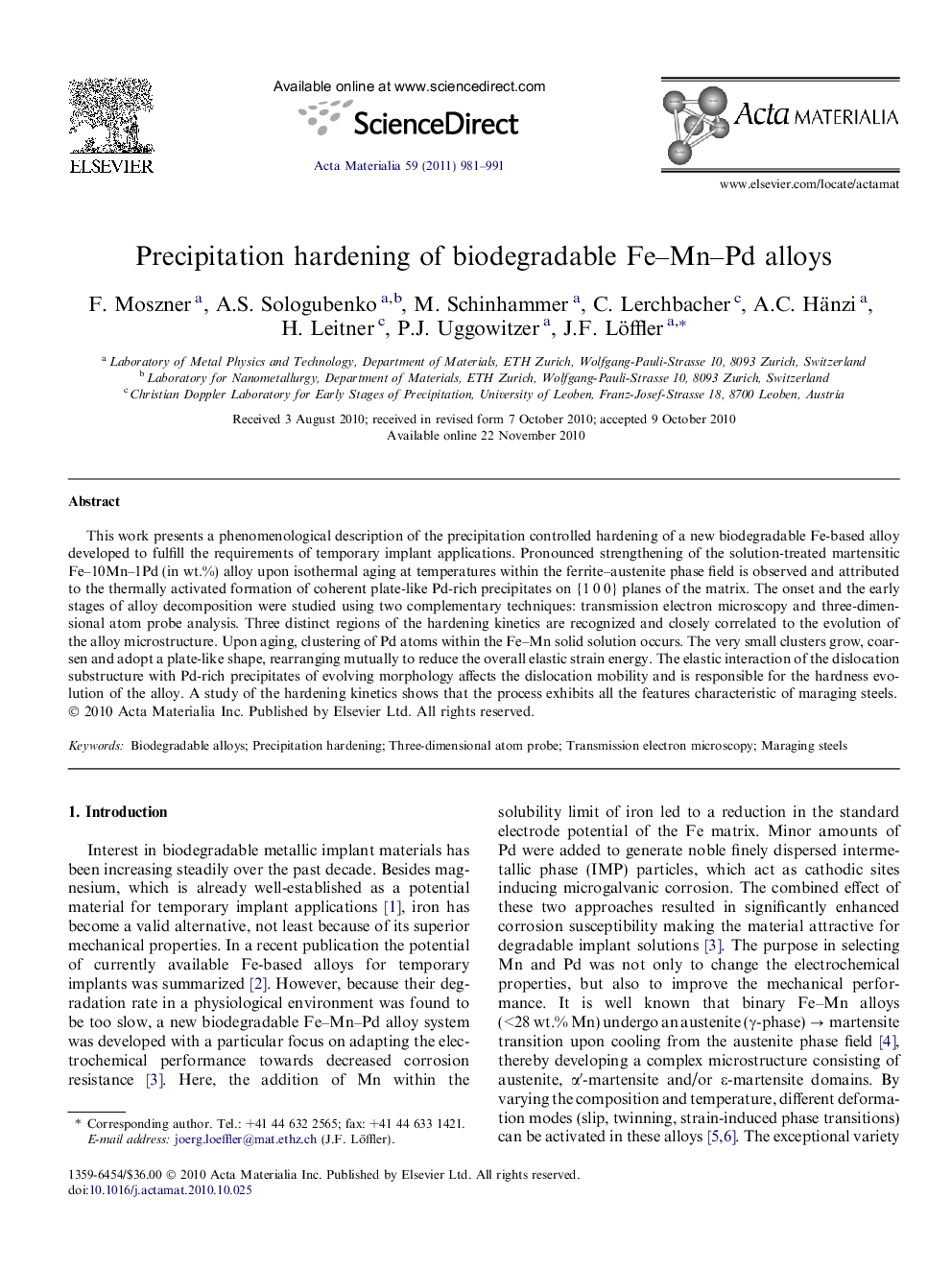| Article ID | Journal | Published Year | Pages | File Type |
|---|---|---|---|---|
| 1447664 | Acta Materialia | 2011 | 11 Pages |
This work presents a phenomenological description of the precipitation controlled hardening of a new biodegradable Fe-based alloy developed to fulfill the requirements of temporary implant applications. Pronounced strengthening of the solution-treated martensitic Fe–10Mn–1Pd (in wt.%) alloy upon isothermal aging at temperatures within the ferrite–austenite phase field is observed and attributed to the thermally activated formation of coherent plate-like Pd-rich precipitates on {1 0 0} planes of the matrix. The onset and the early stages of alloy decomposition were studied using two complementary techniques: transmission electron microscopy and three-dimensional atom probe analysis. Three distinct regions of the hardening kinetics are recognized and closely correlated to the evolution of the alloy microstructure. Upon aging, clustering of Pd atoms within the Fe–Mn solid solution occurs. The very small clusters grow, coarsen and adopt a plate-like shape, rearranging mutually to reduce the overall elastic strain energy. The elastic interaction of the dislocation substructure with Pd-rich precipitates of evolving morphology affects the dislocation mobility and is responsible for the hardness evolution of the alloy. A study of the hardening kinetics shows that the process exhibits all the features characteristic of maraging steels.
